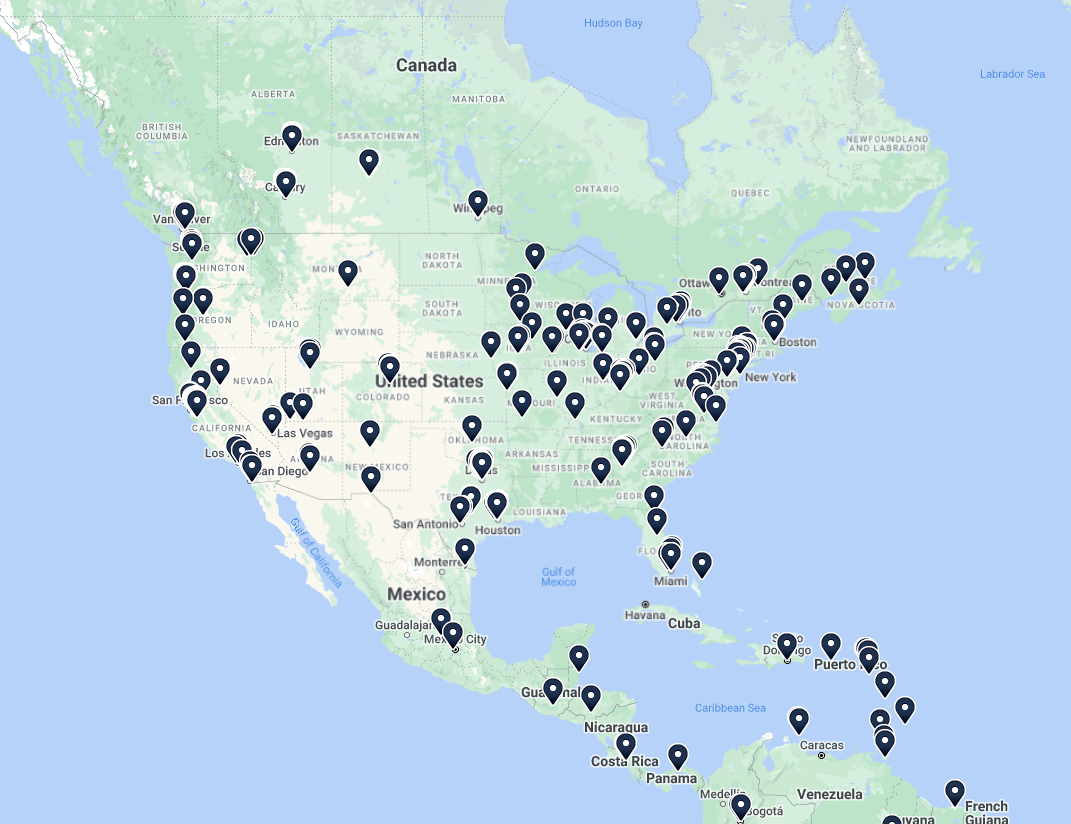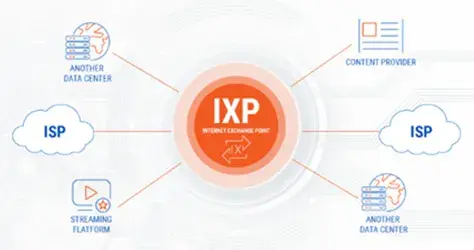
An Introduction to Internet Exchange Points, Peering and Network Interconnection
The classic song “Lean on Me,” by Bill Withers, reminds us that the concept of mutual support applies to businesses as well as friendships. Internet Exchange Points (IXPs) are the behind-the-scenes hubs that enable "peers" to lean on each other to move data around the world.
What Are Internet Exchange Points?
Enterprises, tech companies, government agencies, telecommunications carriers, mobile network providers, internet service providers (ISPs), content delivery networks (CDNs) and others collaborate through network interconnectivity capabilities, which enable efficient routing of local, regional and global data traffic.
An IXP is a physical location similar to a data center in which Internet Service Providers and network operators interconnect their networks. After connecting to an IXP, each service provider in the exchange can hand-off traffic to one another. Depending on the Internet Service Providers, the connections can be local, regional or international.
What Are the Benefits of Internet Exchange Points?

Image courtesy of TeleGeography.
IXPs reduce costs and improve the efficiency of network traffic. They also help to improve application performance by providing a more direct path for traffic between networks. Direct connections enable the fast, reliable internet connections necessary for mission-critical business applications.
IXPs are typically operated by carrier-neutral, third-party organizations. They provide the physical infrastructure and services necessary to facilitate the exchange of traffic. Many large data center facilities are also IXPs. The Internet Exchange Map shows where IXPs are located, down to the street level, with information about which networks use them for peering1 – the term used to describe two or more networks connecting to exchange data within an IXP.
Packet Clearing House also provides a directory of IXP locations, operators and networks. It lists nearly 1,200 IXPs in its global database. The second largest IXP in the U.S. in terms of network participants is CoreSite’s Any2Exchange®. More than 400 network operators and IT companies participate in Any2Exchange – more than 250 members are connected in California. The largest IXP on the West Coast, Any2Exchange facilitates connections for Asia Pacific and North American internet traffic.
PeeringDB is an interconnection database and source of interconnection data for networks, clouds, services and enterprises.
Benefits of IXP Peering for Network Performance
IXP peering, an important component of the internet, helps to improve the performance, reliability and security of internet connections. IXP peering refers to the exchange of internet traffic between two or more ISPs or network operators through an IXP. In peering, the collaborators agree to exchange traffic directly with each other, rather than routing traffic through a third-party network, such as a transit provider.
By connecting to an IXP, ISPs and network operators can establish direct peering relationships with other ISPs and network operators that are also connected to the IXP. This allows them to exchange traffic more efficiently and cost effectively. Traffic within the local area network stays local, and traffic outside the IXP location is routed efficiently.
“The two biggest benefits of peering are internet affordability and reliability.”2
It would be expensive and inefficient to have every ISP create direct connections with every other ISP. To avoid expense and delays, IXPs serve as centralized hubs that support traffic for a geographic region and the exchange of traffic with other IXPs.
Types of Internet Exchange Points
The basic types of IXPs are:
- Public IXPs: Public IXPs are open to ISPs and network operators, regardless of their size or location. They typically provide a neutral, cost-effective platform for interconnecting networks and exchanging internet traffic. Many public IXPs are non-profit organizations with open membership.
- Private IXPs: Private IXPs are operated by a single entity and are accessible only to a limited set of ISPs or network operators.
- Regional IXPs: Regional IXPs serve a specific geographic region, such as a city, state or country. Often, regional IXPs are used to increase the efficiency and performance of local internet traffic.
How IXPs Improve Application Performance
Data moves through networks from one point to another in data packets, subject to agreed-upon networking protocols. The packets contain the data needed for the application as well as data that identifies the sender and the receiver. Billions of these packets traverse the planet every second. Whether the transport medium is a fiber optic cable, a satellite transmission or wireless network, an ISP is responsible for exchanging packets efficiently between an originating point and a destination.
“Analysis of a major blackout in 2025 revealed that Portugal’s internet traffic dropped by up to 90 percent. Spain’s traffic, while impacted, held up better, partly due to its stronger IXP footprint.”3
Application performance depends on the speed at which these packets are delivered. Each device (typically a router) that moves the data over the network is known as a hop. Just as the shortest distance between two points is a straight line, the fastest transfer of data occurs over the route with the fewest number of hops.
Improve Business Outcomes by Understanding How IXP Peering Works

Source: IPTP Networks.4
In our personal lives, the role of an IXP is transparent. We can choose an ISP or a mobile provider based on its value or reputation, but we have no more control over the delivery of packets than the delivery of electricity.
But for our businesses, we need to think about which associates we can lean on. For cloud services, third-party hosted applications, productivity applications and the like, performance should be part of standard service-level agreements. The large content delivery companies, such as Google, Amazon, Microsoft and other organizations already have peering agreements with ISPs and IXPs.
Let’s say a business depends heavily on an on-premises data center and application performance. Response times are critical. An investigation of your current ISP’s peering arrangements can help you understand if you’re getting what you’re paying for, especially application performance and its impact on user experience.
Also consider the physical location of your business – and your partners and customers. IXPs can be located anywhere, but the largest high-traffic IXP locations are typically at the terminus of deep-sea fiber cables and in high-demand business areas such as Los Angeles, Northern Virginia/DC, Miami and Silicon Valley. If your company is based in the U.S. but has branch offices in the Caribbean and South America, consider an IXP in Miami for your network traffic.
Network Interconnection Is the Backbone of the Global Economy
IXPs are enablers of the internet, directing and routing traffic that is needed to drive global business operations with efficient data transit. Most of the time IXPs are transparent, and individual business owners can trust traffic is being managed in their best interests in terms of cost and performance. Yet, it helps to know how IXPs work beyond the concept that organizations lean on each other for mutual support.
Know More
Read about the Any2Exchange to find out if it is right for your business. For questions or more information, contact CoreSite.
References
1. TeleGeography (source)
2. Internet Society, All About Peering: What It Is, How It’s Done and Why We Need It (source)
3. The Register, Internet Exchange Points Are Ignored, Vulnerable and Absent from Infrastructure (source)
4. IPTP Networks (source)










